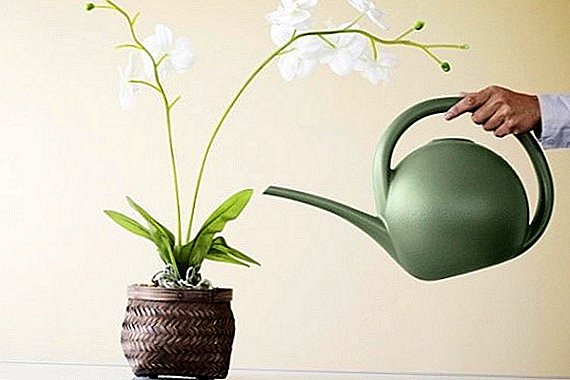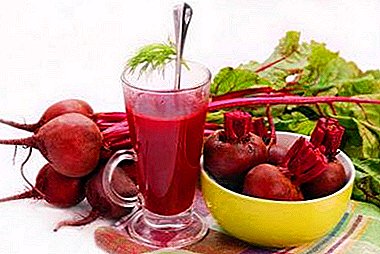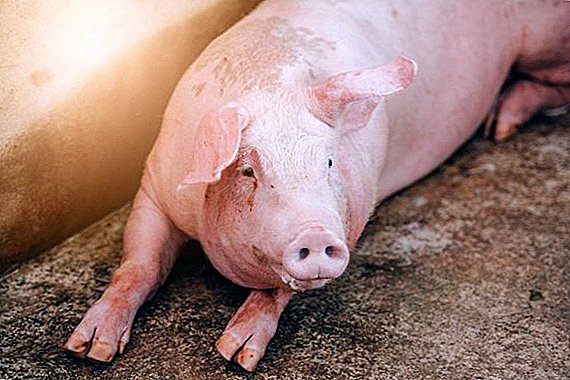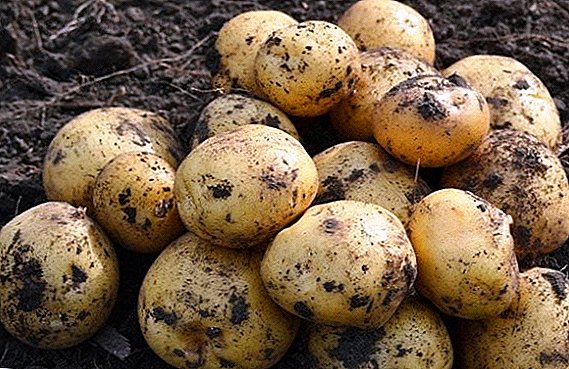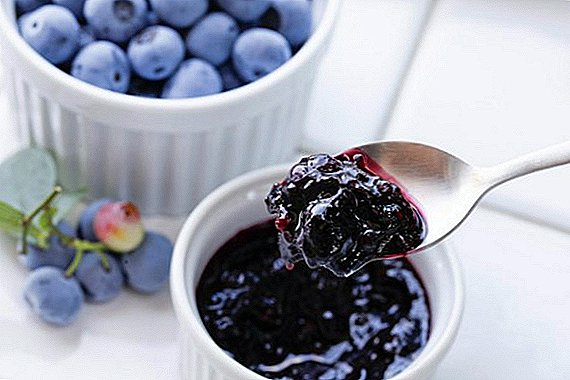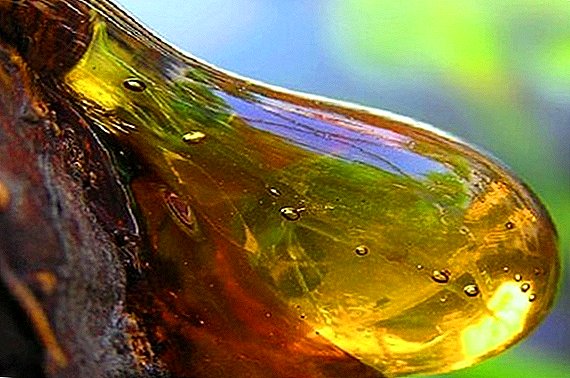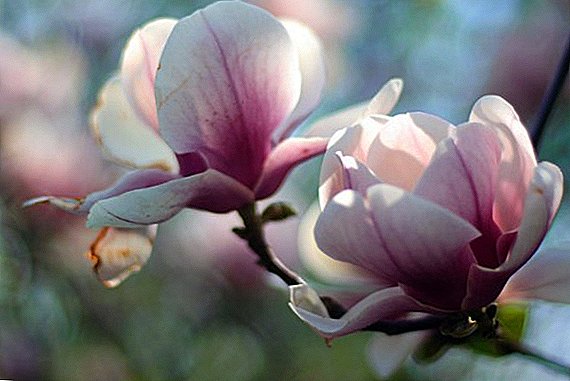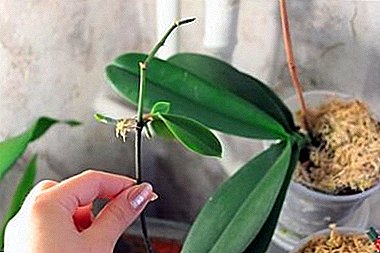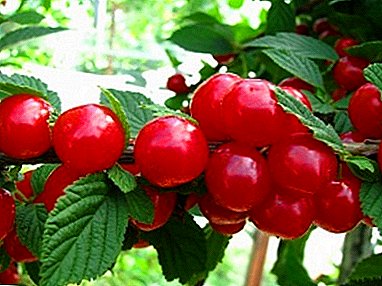
Felt cherry recently the most popular with gardeners. She has a very many advantages and very few flaws. Homeland of this species is considered China.
Felt cherry appeared in our latitudes not so long ago, approximately in the middle of the last century. She is well acclimatized in the northern regions: in Siberia and the Urals. This culture is widespread and middle lane.
Thanks to its unique properties, cherry felt princess is increasingly occupying a place of honor in the household plots and without difficulty grows in any climatic conditionsa description of the variety below.
Description varieties Tsarevna Felt
 The main feature of this type is that although it looks like a cherry, it belongs to the family of plum trees and cannot interbreed with ordinary cherries.
The main feature of this type is that although it looks like a cherry, it belongs to the family of plum trees and cannot interbreed with ordinary cherries.
Felt cherry is a low shrub, usually not growing above 2.5 m. Often this species is called Chinese or Chinese cherry.
It can be used not only as a wonderful fruit crop, but also perfectly suited as a decorative ornament of the garden.
Unlike ordinary cherry, felt has a lot of unique advantages.
The main ones are:
- very high winter hardiness;
- the highest content of vitamins and nutrients in the berries;
- excellent sweet taste and strong pleasant aroma;
- early entry into fruiting;
- extremely high yield;
- compactness and simplicity of a plant;
- does not have root shoots;
- not affected by coccomycosis.
The following sorts of cherries also demonstrate many positive characteristics: Dessert Morozova, Zhukovskaya, Igrushka and Lebedyanskaya.
Among the shortcomings can be identified:
- self-infertility;
- short storage period and the inability to transport fruit;
- the need for constant pruning;
- short life of the plant, not more than 10-15 years;
- instability to moniliosis.
However, with proper care to cope with these shortcomings is not difficult.
Breeding history and breeding region
Mid-season cherry variety Tsarevna received in the Far East in 1977in the process of crossing the variety Summer with Red sweet cherry. His breeding engaged breeders V.P. and N.A. Tsarenko.
Zoned variety in 1999 in the Northern, Northwestern and Far Eastern regions of the Russian Federation. It is widely used in many countries and regions due to its exceptional frost resistance and unpretentiousness.
Also in these areas with good results such varieties are grown: Lyubskaya, Malinovka, Mayak and Molodezhnaya.
Appearance
Consider separately the appearance of the wood and its fruit.
Tree
 Cherry Tsarevna Felt is shrub plant with a height of not more than 1.2-1.5 m, spreading, medium density.
Cherry Tsarevna Felt is shrub plant with a height of not more than 1.2-1.5 m, spreading, medium density.
The main branches are strong enough, straight, light brown in color, with slightly flaky bark. Shoots are reddish, thin, pubescent.
Buds small, sharp. The leaves are small, oblong, oval, with sharp tips and tops, dark green, slightly fluffy, with jagged edges and short petiole.
The flowers are very beautiful, white, medium size, grow 2-3 pieces in one inflorescence. Differ highly decorative, when flowering completely cover the branch.
Fetus
Berries are large, weighing about 3-4 g oval, with a slightly sloping tip at the base, very beautiful, grow on a short stalk, and do not crumble when overripe.
The skin is thin, with well visible hairs, brilliant pink color. The flesh is sweet, juicy, with a slight sourness, rather dense, very pleasant harmonious taste.
The following varieties can boast of excellent taste: Morozovka, Nadezhda, Novella and Vavilov’s Memory.
A photo





Characteristics of cherry
Despite its modest size, Tsarevna high-yielding variety. From one bush can be collected about 10 kg of berries. Cherry fruit Tsarevna Felt begins 3-4 years after planting, and grafted seedlings - after 2 years.
 Harvest begins in late July, about 19-25 numbers. Berries ripen at the same time, which greatly facilitates the harvest.
Harvest begins in late July, about 19-25 numbers. Berries ripen at the same time, which greatly facilitates the harvest.
Variety Tsarevna different extremely high winter hardinessand can withstand a fall without damage t even to -35-40 C. Therefore, it is grown mainly in the northern regions. However, this variety lives for long, about 14-17 years old.
Princess not pollinated alone and near must grow other varieties of felt cherries.
Ordinary cherry for pollination is not suitable. Good pollinators for Tsarevna will be varieties Natalie, East, Delight, Fairy Tale and Ocean Virovskaya.
Berries of this variety not stored therefore, they are more often used for processing or consumed immediately after removal.
It is not necessary to overload the Tsarevna with a harvest, since this leads to a shallowing of the fruit. A timely pruning will help to cope with this problem.
Proper planting and competent care will avoid many troubles and get a decent, high-quality harvest.
Good yields are also able to demonstrate Podbelskaya, Pamyati Enikeeva, Rovesnitsa and Rossoshanskaya.
Planting and care
Plant a variety of Tsarevna as possible spring and autumn. It is better to use 2-year-old saplings with a good root system.
This variety grows well in a sunny location, with a light fertile soil, loamy or sandy.
 Can not be used for planting lowland areas with high groundwater levels and acidic, poorly drained soil.
Can not be used for planting lowland areas with high groundwater levels and acidic, poorly drained soil.
For a rich harvest, at the same time it is necessary to plant at least three different varieties of felt cherries. In this case, you must comply with the landing scheme: 2.5 × 1 m
Pits for landing should be 70 cm wide and about 50 cm deep At the bottom of the pit is placed cooked. a mixture of humus, lime, potassium sulfate and superphosphate, carefully mixed with the top layer of earth.
The seedling is carefully placed in a hole, buried and firmly trampled. Immediately after landing it Abundantly watered and mulch the soil.
You can try to grow a seedling yourself. To this end, the cherry stones are dried, mixed with well-wet sand and planted in autumn, in October, to a depth of about 1 cm. These seedlings grow very well and 2 years they can be dug and planted in a permanent place.
There is another way of landing - cuttings. But it can only be done. in specially equipped greenhouses, and at home is not possible.
In the first two years after planting a bush do not fertilize. Care will be in watering, weeding and loosening the soil. In subsequent years, begin to feed the plant.
 Spring should be used nitrogen and organic fertilizers, and in the fall potash-phosphorus fertilizers are well suited. After feeding, the soil is watered and loosened shallowly.
Spring should be used nitrogen and organic fertilizers, and in the fall potash-phosphorus fertilizers are well suited. After feeding, the soil is watered and loosened shallowly.
For Princess the important point in the care is pruning. One year after landing, spring seedling pruned so that the main barrel stays near 40 cm tall. In the second year, all side shoots should be cut to 1/3 of the length.
Subsequently, spring pruning is carried out annually, leaving at least 10 strong side shoots. It is important to remove old or damaged branches in time to get a good harvest.
This grade does not tolerate excessive soil moistureTherefore, it is necessary to water it carefully and, in the absence of rain, no more than 2-3 times per season.
With these simple manipulations, you can reduce the risk of disease and significantly improve the quality of the crop.
Diseases and pests
The cherry variety Tsarevna is often affected by moniliasis and can be attacked by rodents.
 Monilioz begins to appear in wet and cool weather in early May in the form of a burn on the leaves and shoots.
Monilioz begins to appear in wet and cool weather in early May in the form of a burn on the leaves and shoots.
This disease is caused by fungus and very quickly. extends to buds, flowers and cherry berries. If one plant is sick, then all the cherries growing nearby will get sick.
To combat moniliosis use chemicals, and diseased branches, leaves, and berries are immediately cut and burned.
The first treatment is carried out after flowering, 3% solution of Bordeaux mixture. After 2 weeks, use another fungicide.
For greater efficiency, the drugs alternate and carry out such spraying until the end of June, after which they take a short break.
If you need a sort of disease-resistant cherry, pay attention to Ural Ryabinovaya, Vladimirskaya, Zhiytsy and Tamaris.
To protect the princess from rodents, the trunk and main shoots are carefully wrapped with a special net and lay around the poison bait.
Felt cherry varieties Tsarevna perfectly suitable for planting on their own site. Timely pruning and fertilizing will allow you to get a wonderful harvest and protect the plant from diseases.
This variety has a huge number of advantages, and due to its decoration it is able to decorate any garden.
Watch the video about felted cherry varieties.


